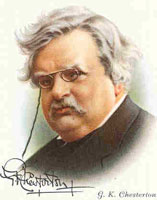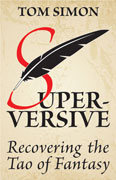Read an article on Harry Potter. In which the author asked why the wizarding world didn’t have TV.
Duh. Because the images would go walking around and vanishing and maybe even talking to you instead of saying their lines.
though, actually, the mobile pictures of the wizarding world might be fun but they aren’t very useful for the basic purposes of pictures. Suppose you actually wanted a photograph of your family to show people. It would be awkward if one child’s image was shy and ran off. And for historical purposes, you want an illustration that doesn’t stop depicting what you want.
Sculpture can be stationary. why not flat images? How much magic does it take to do what Muggles can do with mere chemistry?
I respond, with the lessons I learnt at G.K.C.’s mighty knee:
The sad and solemn secret of Elfland, of which Hogwarts is an outpost, is that the fay-folk lack one great and awful power given to us Muggles by our Creator: the power of ‘Thou Shalt Not’. So it is for us to say, ‘I make a photographic image of thee, and thou shalt not walk out of it.’ When we tell a thing to stay put, it stays, backed by the colossal might of Nature and Nature’s God. It is because the fairies have not this power that all fairy-gold turns back to dust.









Recent Comments